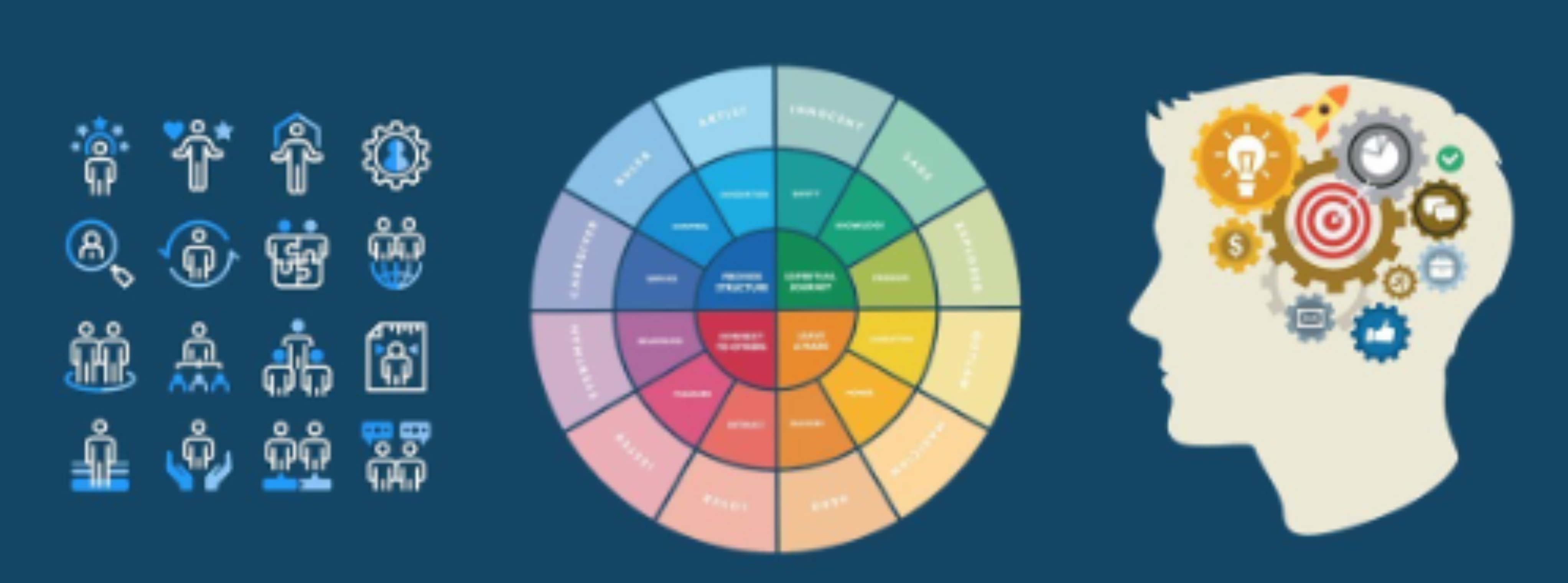

Psychometrics assessments are now very popular tools in HR. Pioneered in the early 20th century, these scientific tools tap into and measure a person's mental capabilities and behavioral style. They offer valuable insights that can be used for hiring, team building, individual growth, etc. For this article, we will compare two main types of personality questionnaires: trait-based and type-based. We will highlight their strengths, limitations, and appropriate use cases.
Psychometrics emerged in the late 19th century, evolving into a specialized discipline over a 100+ year period. Today, it plays a pivotal role across the Talent Management cycle, from hiring decisions to educational assessments to helping diagnose mental health. In the world of work, psychometric assessments are objective tools that help us understand an individual's personality, predict job performance, etc.
1. Trait-Based Psychometric Assessments
Trait-based assessments measure specific personality traits usually referred to as the Big 5 or Big 6. Examples include Conscientiousness, Extraversion etc., of which some have worked their way into our everyday language. Psychometric assessments have been developed to measure these traits. For example, a trait-based assessment might measure how extraverted or introverted a person is, or how conscientious they are.
If you were to complete a personality questionnaire, you would respond to a series of questions indicating how likely you are to agree or disagree with a statement such as how comfortable you are speaking to new people. These questions when aggregated provide insights into how someone thinks, feels or behaves across a variety of situations.
The main advantage is how these traits are measured on a range or a spectrum. Here is an example to illustrate.
Let’s say Ahmed and Leila applied for a job with a company as administrators and they completed a trait-based personality questionnaire. Noora, a trained recruiter, and Samir a hiring manager, are looking for someone who is Conscientious e.g. someone who is detailed oriented, organized, etc. Noora looks at how they responded and sees that although both are conscientious, Leila’s responses suggest that she is more likely to be so than Ahmed.
Trait based assessments provide a level of detail and insight that allows for such comparisons. This can be enormously useful, especially as the number of applicants grow for any position.
Once a candidate is hired, the same profile can be used for development purposes. Using the same example, let’s say Samir and Mohamed decided to hire Leila. Using data from the interview and her profile, they find that Leila could benefit from managing stress more effectively. Therefore, they work together to finalize a development plan where Leila can work on this area.
2. Type-Based Psychometric Assessments
On the other hand, type-based assessments categorize individuals into distinct types or categories based on their responses. Tools like the Myers-Briggs Type Indicator (MBTI) and the DISC model exemplify this approach.
Type-based assessments can be more accessible and straightforward to interpret and understand. They offer clear-cut categorizations that make them useful for understanding team dynamics and fostering effective communication. They give a snapshot view of an individual's personality, making them valuable in scenarios that need swift decisions, such as team building or conflict resolution.
Let's imagine Ahmed and Leila in a team-building exercise. They've both taken a DISC personality assessment, which is a type-based tool. Their Line manager, Samir, is using the results to enhance communication and teamwork.
From the DISC assessment, Samir sees that both Ahmed and Leila fall under the 'C' type (C stands for conscientiousness), meaning they value accuracy, attention to detail, and logical reasoning. However, while Ahmed leans more towards a 'CS' blend (CS stands for conscientiousness and Steadiness ), showing she is systematic and likes a steady, predictable environment, Leila tends more towards a 'CD' blend ( CD stands for conscientiousness and dominance), revealing she's more independent and assertive in her pursuit of accuracy and results.
Despite the limited information the assessment is giving in comparison to trait-based assessments, the simplicity and straightforwardness of type-based assessments can provide clear, immediate insights about team dynamics, helping team unspecialized leaders like Samir leverage each member's unique strengths and cultivate a cohesive, productive team.
However, their binary nature often leads to an oversimplification of personality, reducing the variation or granularity seen in trait-based psychometrics. They also do not to register small changes over time, potentially giving the illusion that of personality rigidity.
When comparing trait-based and type-based tests, we look at several factors. These include how many data points each psychometric uses, how accurate they are, how reliable they are, how they are used in different situations, etc.
Factor | Trait-Based Assessments | Type-Based Assessments |
Data points per assessment | High (various traits measured individually) | Lower (set personality types) |
Accuracy and Validity | High (detailed, continuum-based) | Lower (more general, categorical) |
Reliability | High (consistent, captures nuances over time) | Useful (consistent, less sensitive to minor changes) |
Use in Recruitment | Highly useful (detailed insights into personality, predictive validity for job performance) | Not recommended (it can only provides quick insights into team fit, communication style) |
Employee Development | Highly useful (provides detailed roadmap for personal development) | Useful (can quickly identify team dynamics, communication style, less detailed for individual growth) |
Self-awareness | Highly beneficial (comprehensive understanding of oneself) | Beneficial (quick snapshot of one's personality type) |
Cost of Administration | Variable (may be cost-effective for large groups, costs is lower when same report used for selection then development) | Variable (can be high due to licensing fees, costs increase with added services) |
Time to Complete | Variable (can be longer for comprehensive assessments) | Shorter and Faster to complete |
Both trait-based and type-based psychometric assessments have their advantages and limitations. Understanding these factors can help in choosing the right tool for the right purpose, be it recruitment, employee development, or enhancing self-awareness. As with any assessment tool, their effective use hinges on a sound understanding of their applications and the context they are being used in.